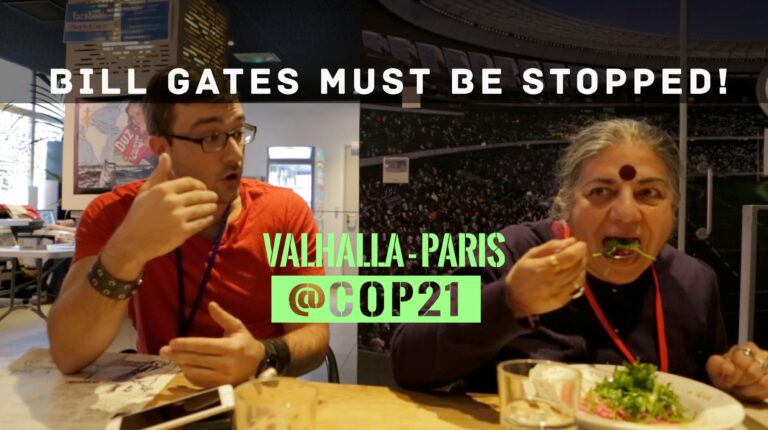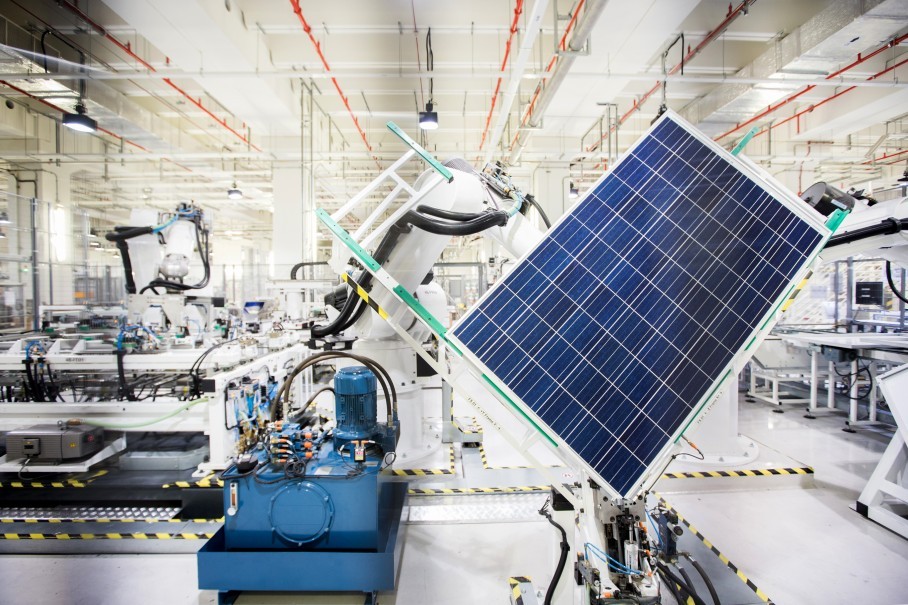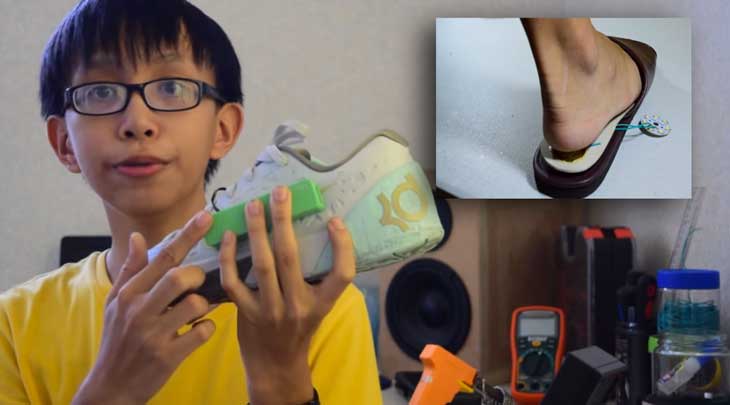Your Vegetarian Hot Dog May Contain Meat … and Human DNA
Think you’re making the healthy choice by picking a vegetarian hot dog? Check the brand you’re buying: A new report found that 10 percent of the vegetarian hot dogs tested contained meat, including chicken in a vegetarian breakfast sausage and pork in a vegetarian hot dog.
But that’s not all. Clear Food, a company that genetically tests food products, looked at 345 hot dog samples from 75 brands, including meat-based and meat-free dogs. Of those 345 hot dogs, 14.4 percent had some sort of issue, be it a labeling inaccuracy or hygiene problem.
Related: Recipes That Prove Vegetarians Get Enough Protein
Some dogs were labeled pork-free – important for certain religions – but were found to contain pork after all. Others only listed one type of meat but included several, or didn’t contain all the ingredients listed.
Even grosser: 2 percent of all samples were found to have traces of human DNA in them. Veggie dogs were the worst off, accounting for 67 percent of the hygiene issues, and two-thirds of the human DNA found.
The good news: As bad as some brands were found to be, there are some trustworthy options out there. The report lists the soy chorizo and meatless corn dogs at Trader Joe’s as a good picks for vegetarians, and Taveritte’s, Whole Foods’ 365 brand, Aidell’s, Hebrew National, Ball Park, Oscar Mayer, and Johnsonville for meat eaters.
Find the full details, plus more recommendations for staying safe, at Clear Food.
Read This Next: 12 Vegetarian Foods That Shockingly Aren’t
Air pollutants are entering our bodies through our skin, study finds
In heavily polluted areas, we all know that we should try to avoid inhaling whatever toxins are floating around as much as possible. That’s why when pollution gets especially bad in China, people are advised to stay indoors, and it’s one of the reasons behind the rise in surgical masks being worn in Tokyo, Japan.
But a new study has found that when it comes to certain airborne pollutants, called phthalates, our skin can absorb just as much as we’re breathing in. “We’re big sponges for these chemicals,” lead researcher, John Kissel from the University of Washington in the US, told Science News.
Phthalates are a group of ‘semi-volatile’ chemicals that are used to make plastic soft and flexible, or as dissolving agents for other types of materials, and are found in all kinds of cosmetics, fragrances, and household cleaners. Derived from oil, around 2 million tonnes of phthalates are produced across the world each year, and more than 20 different types are in common use.
Over the past 50 years, they’ve become the most widely used ‘plasticisers’ in the world, but growing concern over what prolonged exposure – through indoor air, dust, and food packaging, for example – is doing to our health has seen some types banned in Europe and the US.
Studies have shown that phthalates can end up in our bloodstream, breast milk, and urine, and they’ve been classified as ‘endocrine disruptors’, because of the way they affect our body’s hormonal systems, such as the oestrogen and androgen hormone systems.
Preliminary research has linked certain phthalates to the incidences of asthma, with a 2008 study suggesting that heated PVC fumes could contribute to development of asthma in adults, while phthalate exposure in the home could put children at a higher risk of asthma and allergies. There are also indications that exposure could lead to a higher risk of breast cancer, but the research has not yet been definitive.
Kissel and his colleagues wanted to investigate the effect of ‘dermal uptake’ – or absorption through the skin – on the levels of phthalates found in human bloodstreams. They recruited six healthy male participants, and exposed them to elevated air concentrations of two types of phthalates: diethyl phthalate (DEP) and di(n-butyl) phthalate (DnBP). According to Tim Sandle at The Latest News, DEP is used as a solvent in personal care products, such as moisturiser, and DnBP is used as a plasticiser in products like nail polish.
The six volunteers were exposed to the chemicals over a 6-hour period in a special chamber, first with specialised breathing hoods on that prevented them from inhaling any of the phthalates, and then without hoods the following week. The only other clothes they were allowed to wear during exposure was shorts, and they were placed on a restricted diet and restricted use of personal care products 12 hours before entering the chamber and until their urine was collected 66 hours later.
“Metabolite concentrations were lower when the participants were exposed to chamber air while wearing a hood, but the levels were still substantially higher than levels measured before the participants entered the chamber, indicating significant uptake of DEP and DnBP while participants were wearing a hood,” the researchers report in the journal Environmental Health Perspective.
The team found that the dermal uptake of DEP was about 10 percent higher than its inhalation intake, and the dermal uptake of DnBP was 82 percent of its inhalation intake. And the older the participant, the higher the dermal uptakes of both DEP and DnBP from the air. They said that based on the very limited sample of six, the impact of age was surprisingly strong. “The uptake of DEP by the 66-year-old is five times greater than that of the 27-year-old, while the uptake of DnBP is seven times greater,” they report.
The researchers are yet to test how wearing more than just shorts would affect phthalate levels, and yep, that sample size is tiny, but the results warrant some follow-up investigations. Skin is the largest organ in the human body, so if it’s really not protecting us against these commonly used chemicals, that’s a problem. Earlier research has shown that semi-volatile chemicals like phthalates tend to pass through the skin relatively slowly, but they could still build up to damaging levels over several years.
“[I]f the whole body is exposed, then even low rates of exposure can deliver what turns out to be nontrivial amounts of these chemicals,” Kissel told Janet Raloff at Science News.
The coming era of unlimited – and free – clean energy
In the 1980s, leading consultants were skeptical about cellular phones. McKinsey & Company noted that the handsets were heavy, batteries didn’t last long, coverage was patchy, and the cost per minute was exorbitant. It predicted that in 20 years the total market size would be about 900,000 units, and advised AT&T to pull out. McKinsey was wrong, of course. There were more than 100 million cellular phones in use in 2000; there are billions now. Costs have fallen so far that even the poor – all over world – can afford a cellular phone.
The experts are saying the same about solar energy now. They note that after decades of development, solar power hardly supplies 1 percent of the world’s energy needs. They say that solar is inefficient, too expensive to install, and unreliable, and will fail without government subsidies. They too are wrong. Solar will be as ubiquitous as cellular phones are.
Futurist Ray Kurzweil notes that solar power has been doubling every two years for the past 30 years – as costs have been dropping. He says solar energy is only six doublings – or less than 14 years – away from meeting 100 percent of today’s energy needs. Energy usage will keep increasing, so this is a moving target. But, by Kurzweil’s estimates, inexpensive renewable sources will provide more energy than the world needs in less than 20 years. Even then, we will be using only one part in 10,000 of the sunlight that falls on the Earth.
In places such as Germany, Spain, Portugal, Australia, and the Southwest United States, residential-scale solar production has already reached ” grid parity ” with average residential electricity prices. In other words, it costs no more in the long term to install solar panels than to buy electricity from utility companies. The prices of solar panels have fallen 75 percent in the past five years alone and will fall much further as the technologies to create them improve and scale of production increases. By 2020, solar energy will be price-competitive with energy generated from fossil fuels on an unsubsidized basis in most parts of the world. Within the next decade, it will cost a fraction of what fossil-fuel-based alternatives do.
It isn’t just solar production that is advancing at a rapid rate; there are also technologies to harness the power of wind, biomass, thermal, tidal, and waste-breakdown energy, and research projects all over the world are working on improving their efficiency and effectiveness. Wind power, for example, has also come down sharply in price and is now competitive with the cost of new coal-burning power plants in the United States. It will, without doubt, give solar energy a run for its money. There will be breakthroughs in many different technologies, and these will accelerate overall progress.
Despite the skepticism of experts and criticism by naysayers, there is little doubt that we are heading into an era of unlimited and almost free clean energy. This has profound implications.
First, there will be disruption of the entire fossil-fuel industry, starting with utility companies – which will face declining demand and then bankruptcy. Several of them see the writing on the wall. The smart ones are embracing solar and wind power. Others are lobbying to stop the progress of solar power – at all costs. Witness how groups in Oklahoma persuaded lawmakers to approve a surcharge on solar installations; the limited victory that groups backed by the Koch brothers won in Arizona to impose a $5 per month surcharge; and the battles being waged in other states. They are fighting a losing battle, however, because the advances aren’t confined to the United States. Countries such as Germany, China, and Japan are leading the charge in the adoption of clean energies. Solar installations still depend on other power sources to supply energy when the sun isn’t shining, but battery-storage technologies will improve so much over the next two decades that homes won’t be dependent on the utility companies. We will go from debating incentives for installing clean energies to debating subsidies for utility companies to keep their operations going.
The environment will surely benefit from the elimination of fossil fuels, which will also boost most sectors of the economy. Electric cars will become cheaper to operate than fossil-fuel-burning ones, for example. We will be able to create unlimited clean water – by boiling ocean water and condensing it. With inexpensive energy, our farmers can also grow hydroponic fruits and vegetables in vertical farms located near consumers. Imagine skyscrapers located in cities that grow food in glass buildings without the need for pesticides, and that recycle nutrients and materials to ensure there is no ecological impact. We will have the energy needed to 3D-print our everyday goods and to heat our homes.
We are surely heading into the era of abundance that Peter Diamandis has written about – the era when the basic needs of humanity are met through advancing technologies. The challenge for mankind will be to share this abundance, ensuring that these technologies make the world a better place.
Congress to Eliminate Billions in Wall Street Subsidies to Fund Repair of Nation’s Highways
Both parties of Congress are in agreement on diverting billions in Wall Street subsidies to rebuild America’s crumbling infrastructure. If you’re by a window, look outside for flying pigs.
Currently, the Federal Reserve pays out a 6 percent annual dividend to roughly 2,900 banks – JPMorgan Chase, Citigroup, Bank of America, and Wells Fargo net approximately $350 million apiece each year from the dividend. These banks own stock in the Federal Reserve as a means of becoming members of regional Fed branches around the country, and unlike other stocks, the big banks are guaranteed to never lose money on their investment in the Fed. For years, the Congressional Progressive Caucus has proposed reducing that dividend to 3 percent in order to pay for repairing American infrastructure. After lying dormant for over a year, it appears that idea has now caught on with Republicans as well.
According to Bloomberg, Senate majority leader Mitch McConnell (R-Ky.) recently told a group of Wall Street executives at a Financial Services Roundtable event that he wouldn’t use his power to remove a new rule that allots funding for federal highways by reducing that dividend to 1.5 percent. The House is now weighing whether or not to back the dividend reduction before highway funding runs out at the end of October. Should the proposal go through, America’s highways would benefit from an additional $17 billion in repairs over the next ten years.
Now, Wall Street is in panic mode.
“The idea that going forward that we are going to pay for our nation’s infrastructure on the backs of one industry sector is a really flawed public policy,” said American Bankers Association president Rob Nichols.
While Fed chair Janet Yellen has taken the banks side, saying she believes the policy “could conceivably have unintended consequences,” Washington prognosticators believe the banks will ultimately have to sacrifice their Fed dividend, and possibly more federal handouts further down the road.
“The industry is in a very dangerous spot because it is a pot of gold,” Karen Shaw Petrou, managing partner of Federal Financial Analytics, told Bloomberg. “With the general political climate I don’t know a lot of people on Capitol Hill that like banks.”
The proposal is likely to pass, as past Republican proposals to fund infrastructure repair included a tax repatriation holiday – allowing corporations to bring back some of the $2.1 trillion stashed in overseas tax havens back to the U.S. at a 5 percent rate rather than a 35 percent rate – a proposal that President Obama has promised to veto in the past. As I previously wrote in The Guardian, the only result that came out of past attempts at repatriation was mass layoffs of workers, while corporations used the repatriated cash to buy back their own stock, driving up the value of the options owned by executives.
Bad of an idea as it is, repatriation still attracted the support of Wall street-backed Democrats like Chuck Schumer, and corporations have lobbied Rep. Paul Ryan (R-Wisc.), the House Ways and Means chairman, to include repatriation in a tax reform package. However, lawmakers predicting an Obama veto are rejecting the idea of repatriation for now and are gravitating toward a solution for America’s highways they know Obama will sign by the end of the month.
The dividend cut has already been included in the Senate’s compromise bill, which will fund highways over the next 3 years. That bill passed by an almost two-thirds margin in July.
C. Robert Gibson is editor in chief of US Uncut. His past work has been published in The Guardian, Al Jazeera America, NPR, and the Washington Post. Follow him on Twitter: @crgibs
“Employees are bitter” as Whole Foods chops jobs and wages

Whole Foods Market co-CEO and co-founder John Mackey has never hidden his disdain for labor unions. “Today most employees feel that unions are not necessary to represent them,” he told my colleague Josh Harkinson in 2013. That same year, Mackey echoed the sentiment in an interview with Yahoo Finance’s the Daily Ticker. “Why would they want to join a union? Whole Foods has been one of [] 100 best companies to work for for the last 16 years. We’re not so much anti-union as beyond unions.”
On September 25, the natural-foods giant gave its workers reason to question their founder’s argument. Whole Foods announced it was eliminating 1,500 jobs-about 1.6 percent of its American workforce-“as part of its ongoing commitment to lower prices for its customers and invest in technology upgrades while improving its cost structure.” The focus on cost-cutting isn’t surprising-Whole Foods stock has lost 40 percent of its value since February, thanks to lower-than-expected earnings and an overcharging scandal in its New York City stores.
Supervisors “in all departments were demoted…and told they were no longer supervisors, but still had to fulfill all of the same duties.”
Sources inside the company told me that the layoffs targeted experienced full-time workers who had moved up the Whole Foods pay ladder. In one store in the chain’s South region, “all supervisors in all departments were demoted to getting paid $11 an hour from $13-16 per hour and were told they were no longer supervisors, but still had to fulfill all of the same duties, effective immediately,” according to an employee who works there.
I ran that claim past a spokesman at the company’s Austin headquarters. “We appreciate you taking the time to reach out and help us to set the record straight,” he responded, pointing to the press release quoted above. When I reminded him that my question was about wage cuts, not the announced job cuts, he declined to comment.
Another source, from one of Whole Foods’ regional offices, told me the corporate headquarters had ordered all 11 regional offices to reduce expenses. “They’ve all done it differently,” the source said. “In some regions, they’ve reduced the number of in-store buyers-people who order products for the shelves.”
I spoke with a buyer from the South region who learned on Saturday that, after more than 20 years with the company, his position had been eliminated. He and other laid-off colleagues received a letter listing their options: They could reapply for an open position or “leave Whole Foods immediately” with a severance package-which will be sweetened if they agree not to reapply for six months. If laid-off employees manage to snag a new position that pays less than the old one did, they are eligible for a temporary pay bump to match the old wage, but only for a limited time.
Whole Foods has “always been an 80/20 company” in its ratio of full- to part-time workers, but managers are now “incentivized to bring down that ratio.”
Those fortunate enough to get rehired at the same pay rate may be signing up for more work and responsibility. At his store, the laid-off buyer told me, ex-workers are now vying for buyer positions that used to be handled by two people-who “can barely get their work done as it is.”
My regional office source told me that the layoffs and downscaling of wages for experienced staffers is part of a deliberate shift toward part-time employees. Whole Foods has “always been an 80/20 company,” the source said, referring to it ratio of full- to part-time workers. Recently, a “mandate came down to go 70/30, and there are regions that are below that: 65/35 or 60/40.” Store managers are “incentivized to bring down that ratio,” the source added.
Employees working more than 20 hours per week are eligible for benefits once they’ve “successfully completed a probationary period of employment,” the Whole Foods website notes. But some key benefits are tied to hours worked. For example, employees get a “personal wellness account” to offset the “cost of deductibles and other qualified out-of-pocket health care expenses not covered by insurance,” but the amount is based on “service hours.”
And part-time employees tend not to stick around. My regional source said that annual turnover rates for part-timers at Whole Foods stores approach 80 percent in some regions. According to an internal document I obtained, the national annualized turnover rate for part-time Whole Foods team members was more than triple that of full-timers-66 percent versus about 18 percent-in the latest quarterly assessment. “Whole Foods has always been a high-touch, high-service model with dedicated, engaged, knowledgeable employees,” the source said. “How do you maintain that, having to [constantly] train a new batch of employees?”
One of Whole Foods’ “core values,” is to support the “happiness and excellence” of its employees. But that may be hard to reconcile with pleasing Wall Street.
Of course, Whole Foods operates in a hypercompetitive industry. Long a dominant player in natural foods, it now has to vie with Walmart, Trader Joe’s, and regional supermarket chains in the organic sector. Lower prices are key to staying competitive, and in order to maintain the same profit margins with lower prices, you have to cut your expenditures. Whole Foods’ labor costs, according to my regional source, are equal to about 20 percent of sales-twice the industry standard.
It’s not unusual for a publicly traded company to respond to a market swoon by pushing down wages and sending workers packing. But Whole Foods presents itself as a different kind of company. As part of its “core values,” Whole Foods claims to “support team member [employee] happiness and excellence.” Yet at a time when the company’s share price is floundering and its largest institutional shareholder is Wall Street behemoth Goldman Sachs-which owns nearly 6 percent of its stock-that value may be harder to uphold.
Workers join unions precisely to protect themselves from employers that see slashing labor costs as a way to please Wall Street. “There’s a fear of unions coming in, because employees are bitter,” the regional-office source said. “People talk about it in hushed tones.”
15 Year Old Invents Device That Generates Electricity While You Walk
Teenager becomes regional finalist in Google’s 2014 Science Fair with shoe insole that generates electricity
 By John Vibes,
By John Vibes,
15-year-old Angelo Casimiro, from the Philippines, has recently made international news with a new invention that generates electricity in a very new and interesting way. The invention is a shoe insole that harnesses electricity every time that the person wearing the shoe takes a step. Angelo constructed his device using piezoelectric materials, which actually generate an alternating current voltage every time they are squeezed.
According to a blog post made by the teenager, “Piezoelectricity was present ever since mid-18th century. Piezoelectricity is the electric charge that accumulates in certain solid materials (such as crystals, certain ceramics in response to applied mechanical stress.”
Young Angelo has been working hard developing this idea for the past 4 years, since he was 11 years old. Now that he believes he has perfected his invention, he is prepared to share it with the world. He started by entering the project into this year’s Google’s Science Fair, where he has become a regional finalist.
The device can be used to charge cell phones and other electronic devices, which may not sound like a big deal, but it is actually a huge innovation. Imagine never worrying about charging your cell phone ever again when you are out on vacation, at a festival or on a hike. Additionally, Angelo has made the plans for the device open sourced, so others can apply their own ideas to this concept, and possibly be able to improve this idea for wider uses.
Angelo says that while this device is fully operational, it is not yet ready for mass distribution.




















